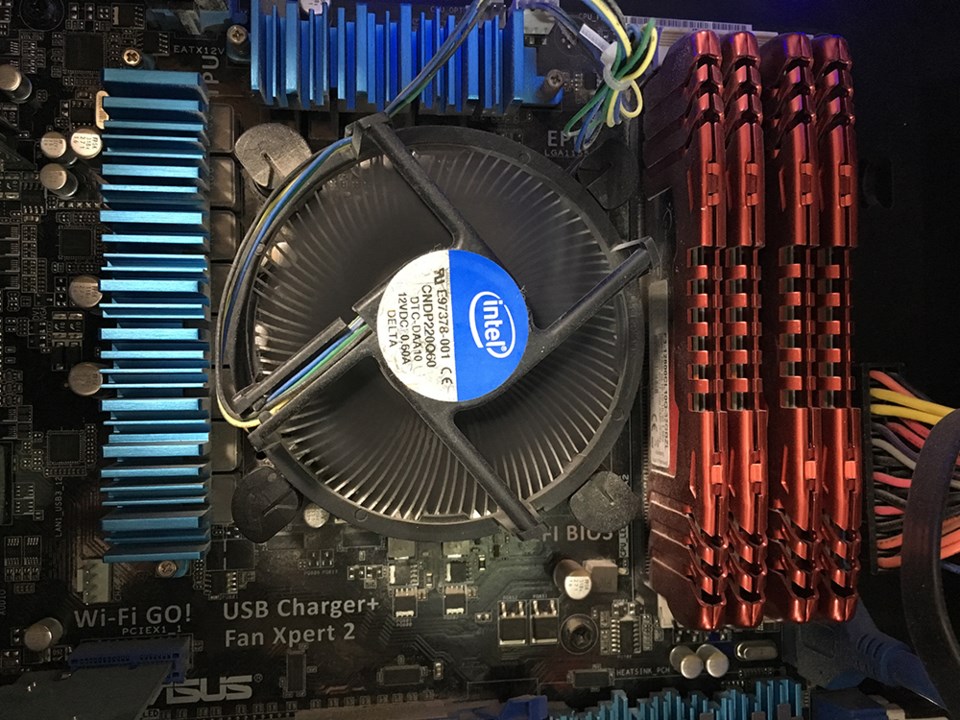I was editing a video project on this fine day and I wanted to use a clip from a previous project. That project worked rather well, so I wasn’t expecting any problems.
Then I got this:
“Can’t play
“This item was encoded in a format that’s not supported.
“0�泦00��5212
“Send feedback.”
At which point I wanted to take a four-pound sledgehammer to it. Feedback? Here’s your freakin’ feedback!
Now, I’m a Grade A computer geek. This mammoth computer on my desk, with four monitors, two uninterruptable power supplies, two RAIDs, 13 external hard drives, three printers, two scanners, three keyboards, a graphics tablet and a mouse – yeah, I built it myself. And I’ve rebuilt half of it. So I quite literally know it inside and out. (It looks like the Borg, if you’re wondering).
A few months ago, I finally, finally, installed Windows 10. I would liked to have installed it several years ago, when Microsoft was pushing everyone to get off Windows 8 and upgrade to Windows 10. However, due to there being insufficient space on the drive, and no conceivable way to change it, I gave up after dozens of upgrade attempts and days wasted in the trying.
Thus I was running a Windows 8 installation for six and a half years, with no reinstalls, since late 2012. Most computer geeks would recognize that as a remarkable, yet lamentable, thing.
Anyhow, with a new, larger SSD drive in hand, I decided it was finally time to bite the bullet and install Windows 10. And for the most part, it worked. Everything worked. Until something didn’t.
Earlier today, I realized my backup software wasn’t working, because I hadn’t gotten around to reinstalling it. Okay, I got that done, but didn’t know if I was “adding a new device” or “replacing a device.” The wrong decision could mean accidentally deleting my cloud backup of five or six terrabytes of data. Thus, I contacted support who might have the right answer.
I was looking for a number of video clips from 2017 that seemed to have vanished, thus I was looking for the backup. Thankfully I located them on one of those 13 drives mentioned above.
Getting back to the video project, I found a few clips I really wanted to use. They were in the .AVI format, which to most people is just gobbledegook. But fundamentally, it’s a video format, one that Apple’s QuickTime video software used for a very long time. Until it didn’t.
Turns out, a few years ago, a security flaw in QuickTime led Apple to say to hell with it, and they stopped supporting it in 2016. And if you have files in that format, too bad, so sad.
Why is this important?
It turns out that I was missing something called a codec. I discovered that by pasting “0�泦00��5212” into Google. Think of a codec as a bit of software that tells your computer how to deal with a certain type of file. If you want to look at raw, unprocessed image files from a Nikon camera, for instance, you need the proper Nikon codec.
Somehow, in my reinstallation of my computer, the proper codec for AVI, which used to be pretty universal, didn’t happen. And now I can’t seem to find one that works.
The video clips in question were made with an older version of GoPro software, creating timelapse videos out of a series of images taken in sequence. I found out it worked with images from any camera, including Nikon. But the most recent version of the software, which I installed a few weeks ago, will now only work with GoPro cameras.
(I really hate it when features are stripped out of software. Windows is horrible for this. Remember the ability to watch a DVD on your computer, natively? Gone. Now you have to pay like $100 for crappy software you used to have for free – Windows Media Player. Don’t get me started on Blu-ray drives that don’t come with software to play Blu-rays.)
Maybe the older GoPro CineForm Studio would include the AVI codec? After all, it created these files. It should work.
Well, it will view the file. But I can’t open it otherwise. My video editing software, Adobe Premiere Pro, will allow me to use these files if I re-import them, but otherwise they don’t work (which sent me on this wild goose chase in the first place.)
Thus, a few hours later, I can kind of use these clips, but not really. I can’t open them outside of the specialized editing software. I can’t find a codec that works, and I am about to pull my hair out.
This got me wondering, how do mere mortals, who don’t build computers from scratch, deal with such things? What do they do when something simply will not work, especially when it did work before? And that thing, whatever it is, is mission critical?
Do they call for their kid to help? And what if that kid has no clue either, not having spent the last 25 years dealing with such things? Do they call a friend? Use an online forum and pray for an answer?
Or do they just break down and cry?
Eventually I will find a solution for this. I just don’t have the time tonight.
But I could see where a sledgehammer could become a useful coping mechanism for dealing with computers.
Brian Zinchuk is editor of Pipeline News. He can be reached at [email protected].
��




